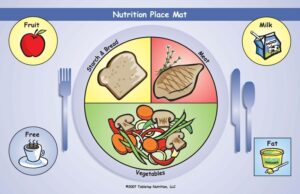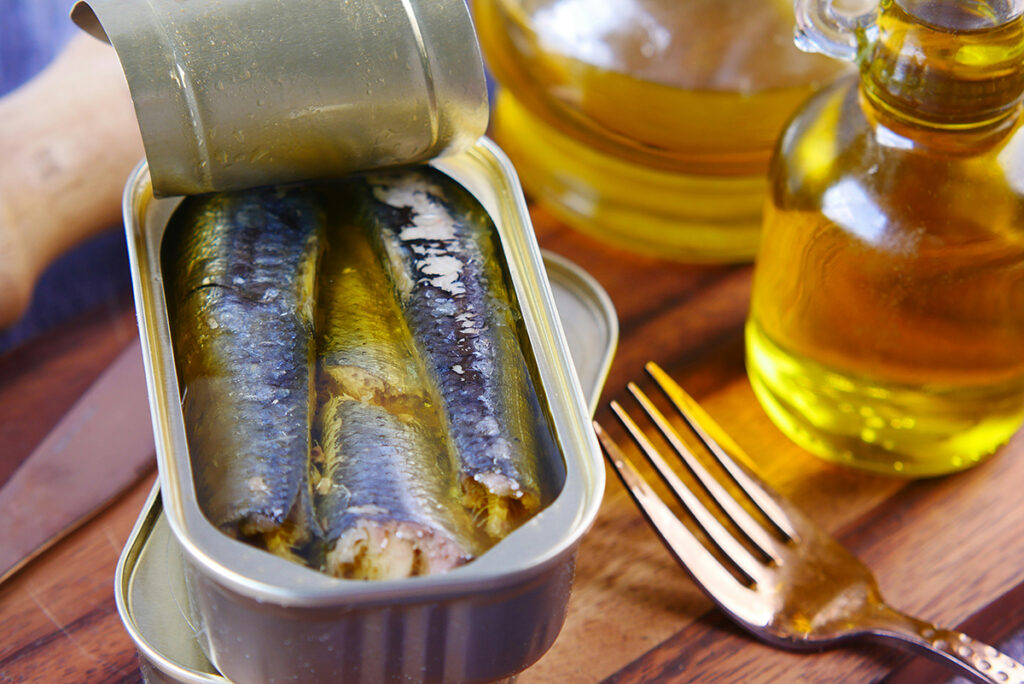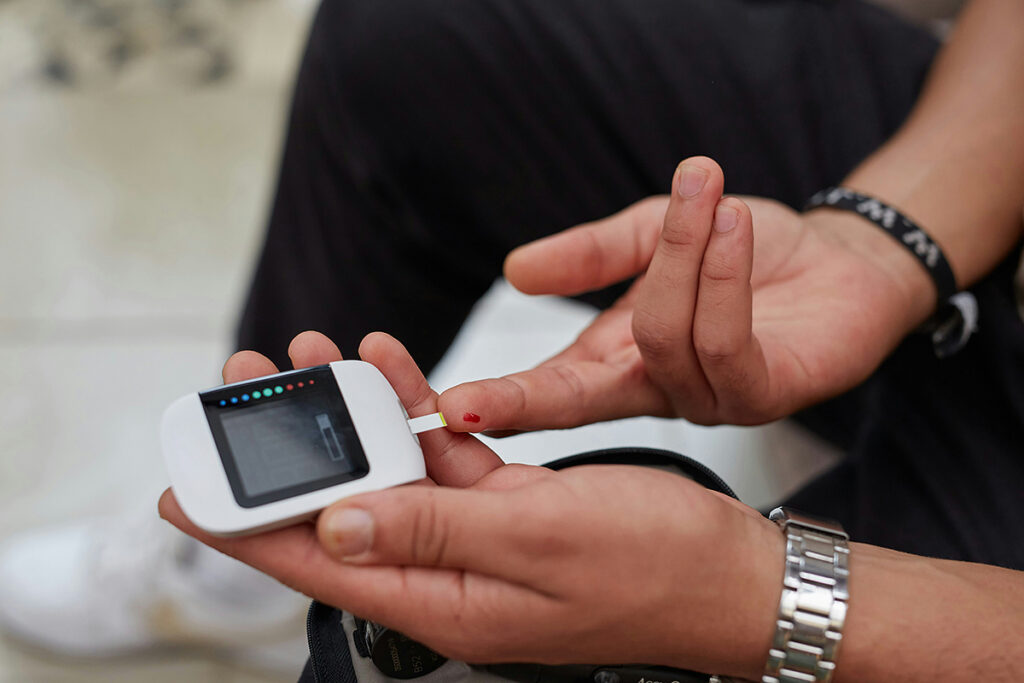Content
- Type 2 diabetes: causes, risks, glucose, insulin
- How to Lose Weight With Type 2 Diabetes
- Healthy Nutrition for Type 2 Diabetes
- Carbohydrates
- Fats
- Proteins
- Allowed Nuts in Type 2 Diabetes
- The “Plate Method” Diet
- References
Type 2 Diabetes: Causes, Risks, Glucose, Insulin
All cells in the body need glucose. The primary consumers of glucose are the liver, muscles and adipose tissue. Glucose enters cells with the help of the hormone insulin. In type 2 diabetes, the body stops responding to normal and even high insulin levels.
Insulin is produced by beta cells in the pancreas. Beta cells are forced to produce more insulin when blood glucose levels rise. As a result, beta cells become depleted and can no longer produce enough insulin. When insufficient insulin is in the blood, an elevated glucose level remains, damaging various organs, especially the eyes, kidneys, and nervous and cardiovascular systems.
Type 2 diabetes mellitus (T2DM) is a metabolic disorder associated with impaired insulin action and characterized by elevated blood glucose levels (hyperglycemia). In T2DM, there is insulin resistance and relative insulin deficiency.
Patients with diabetes have an increased risk of developing complications such as stroke, myocardial infarction, coronary heart disease, kidney failure, vision loss, and poor blood flow to the limbs, which can lead to amputation.
Most often, T2DM occurs due to obesity and lack of exercise. Age, genetics, smoking status, and a diet high in fat and carbohydrates play an essential role.
Being overweight, especially with excess fat in the liver and abdominal cavity, increases the body’s need for insulin, leading to blood glucose buildup and problems if left untreated.
Treatment for type 2 diabetes involves weight loss and normalization of blood glucose levels through diet, exercise, and medications. Weight loss can improve blood sugar control and lower blood pressure and cholesterol levels.
Regular exercise makes the body more sensitive to insulin, which helps lower blood sugar levels. Exercise can also help lower high blood pressure and improve cholesterol levels. Also, exercise helps to lose weight, maintain a healthy body weight, and improve sleep, memory and mood. For more information on the effects of exercise and medications on patients with type 2 diabetes, see the article “Exercise or Metformin: Which is Better for Insulin Resistance?”
How to Lose Weight With Type 2 Diabetes
The goal of a diabetic diet is to prevent complications.
If you are overweight or obese, doctors recommend reducing weight by 5-10%. Eating fewer calories and regular exercising will help you lose weight.
Recommended calorie intake is the number of calories needed to maintain your current weight, which varies by age, gender, height, weight, and activity level. The following are general guidelines:
- Men, active women – 33 kcal per kg of body weight.
- Most women, sedentary men, and adults over 55 – 28 kcal per kg of body weight.
- Sedentary women and obese adults – 22 kcal per kg of body weight.
- Pregnant, lactating women – from 28 to 37 kcal per kg of body weight.
The safe rate of weight loss is 0.5 to 1 kg per week. To lose 0.5-1 kg, subtract 500 to 1000 kcal from the total calories needed to maintain weight. To lose weight, adjust daily recommended calorie intake.
Example: A sedentary obese man who weighs 100 kg needs to eat 22 kcal per 1 kg to maintain his weight, which is 2200 kcal per day. To lose 0.5-1 kg per week, a man should reduce his calorie intake to 1700-1200 kcal daily. A week later, a man has reached a weight of 99 kg and wants to continue to lose weight. He must again calculate the recommended calorie intake and subtract 500-1000 kcal.
Healthy Nutrition for Type 2 Diabetes
The diet for people with diabetes is not extraordinary but healthy. Healthy eating does not have to be dull and insipid. Eating right can be easy and delicious.
To normalize blood pressure and protect against heart disease and stroke, eating foods rich in potassium, calcium, magnesium, fiber, and protein is essential.
It is equally important to reduce the consumption of foods that contain:
- Sodium – in table salt, canned food, semi-finished products, ready meals, smoked meats, pickles, and mayonnaise.
- Saturated fats –animal fats, butter, palm and coconut oils, and some mayonnaise types.
Carbohydrates
The main goal in treating diabetes is to achieve as close to normal blood glucose levels as possible. Glucose levels are affected by the total amount of carbohydrates consumed. A low-carbohydrate diet may lower blood glucose levels and reduce the need for antihyperglycemic drugs for people with type 2 diabetes.
However, low-carb diets are challenging to stick to consistently. To avoid sudden spikes in blood sugar, portions of carbohydrates should be the same at each meal, and it is important to eat regularly and little by little.
The minimum recommended amount of carbohydrates is 130 g per day, but this depends on the level of physical activity. With three meals a day, each meal will have 40-50 g of carbohydrates.
Choosing good quality carbohydrates high in fiber, such as whole grains and brown varieties, is crucial. Fiber slows down the absorption of carbohydrates, therefore lowering blood sugar levels. Fiber-rich foods are digested more slowly, promoting satiety with fewer calories and sugars. Fiber may help fight obesity and prevent the risk of heart disease, type 2 diabetes, and colon cancer.
The optimal fiber content per serving is more than 5 g. Patients with diabetes and healthy people should consume 20 to 35 g of fiber from raw vegetables and whole grains daily.
Sources of fiber:
- bran;
- cabbage;
- legumes;
- whole grain breads and cereals;
- fruits and vegetables.
Fats
For healthy people, doctors suggest that 20-35% of total calories should come from fat.
The quality of the fat is much more important than the quantity. To reduce the risk of cardiovascular disease, it is essential to replace trans fats (margarine, fast food, fried foods, and some baked goods), animal fats (butter, lard, red meat, ice cream) and tropical oils (palm, coconut) with healthier ones. Oils and foods high in unsaturated fats:
- olive oil;
- sunflower oil;
- linseed oil;
- mustard oil;
- fish;
- nuts;
- flax seeds.
However, these foods should be consumed cautiously, as excessive consumption of fats can lead to excess weight and complicate the course of type 2 diabetes.
Proteins
Protein foods do not affect blood glucose levels. Protein is needed to increase muscle mass and repair body tissues. Protein should complement vegetables, fruits, and whole grains, not the only source of calories.
The National Kidney Foundation (USA) recommends an intake of 0.8 g protein/kg of desired body weight for people with diabetes and stage 1-4 chronic kidney disease to reduce albuminuria and maintain kidney function. For people without kidney disease, the Joslin Diabetes Center (USA) recommends a protein intake of 20-30% of total calories.
Good sources of lean animal protein:
- bird without skin;
- fish;
- eggs;
- low-fat dairy products;
- tofu;
- legumes;
- nuts or seeds.
Allowed Nuts in Type 2 Diabetes
Patients with type 2 diabetes can eat nuts but limit consumption to 30 g/day.
30 grams of nuts is:
- almonds – 24 pieces;
- medium-sized cashews – 18 pcs.;
- hazelnuts – 12 pieces;
- brazil nuts of medium size – 8 pcs.;
- macadamia – 12 pieces;
- peanuts – 35 pieces;
- pecan – 15 halves;
- walnut – 14 halves;
- nut butter – 2 tablespoons.
Nuts and seeds are also a source of fat. Excessive use of them can lead to excess weight and aggravate diabetes.
The “Plate Method” Diet
It’s easy to eat more food than you need without realizing it. The plate method is a way to get the right balance of proteins, fats and carbohydrates and not overeat.
For a dinner plate with a diameter of 23 cm:
- Half – non-starchy vegetables: lettuce, green beans, broccoli, cauliflower, cabbage, carrots.
- Quarter – lean protein: chicken, turkey, beans, tofu, eggs.
- A quarter – carbohydrate foods with fiber: whole grains, pasta, bread, brown rice, peas, potatoes and bran.
Image source: https://www.ncbi.nlm.nih.gov/books/NBK279012/
Useful article, necessary information? Share it!
Someone will also find it useful and necessary:
References
- Nutritional Recommendations for Individuals with Diabetes
- Diabetes Meal Planning
- Diabetes – basic diet advice for newly diagnosed
- Patient education: Type 2 diabetes and diet (Beyond the Basics)




